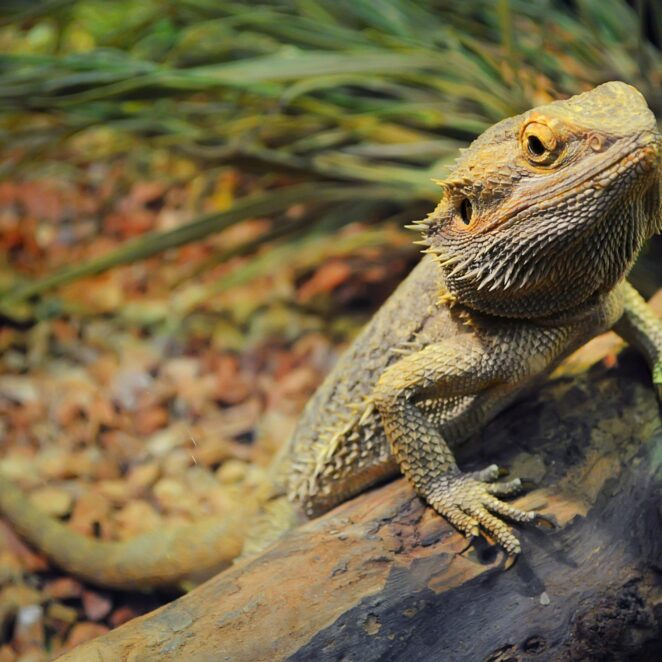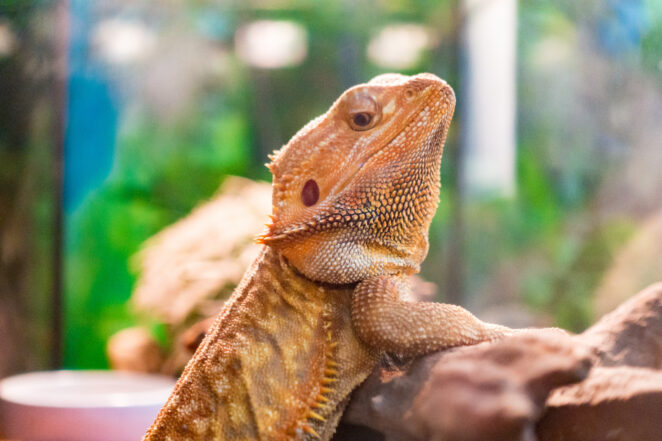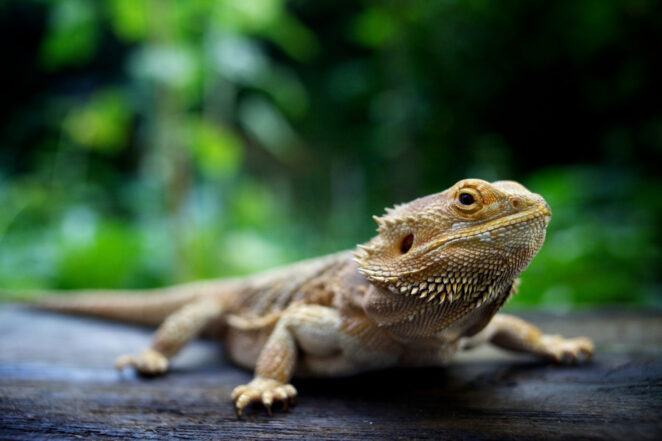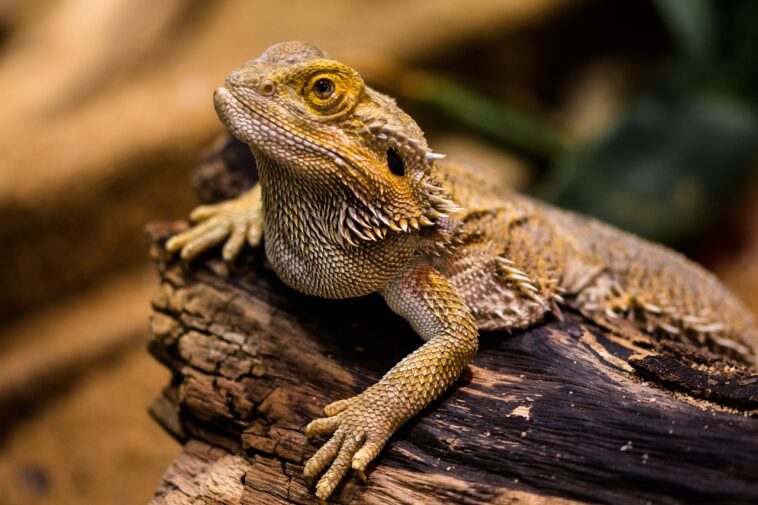The bearded dragon is one of the world’s most sought-after pets. But how much knowledge do you possess about them? If your answer is “not much,” read on to discover ten exciting facts about them.
1. Bearded Dragons Are Omnivorous
Contrary to popular belief, bearded dragons are omnivores and enjoy a diverse diet of plants and animals. Their staple diet consists of various insects such as crickets, mealworms, and wax worms, as well as small amounts of dark leafy greens like kale and collard greens, smaller pieces of vegetables like squash and bell peppers, and other fruits.
As beardies grow older, they occasionally include pinky mice for extra protein in their diet. Also, you can feed them Dubia roaches, available at https://www.topflightdubia.com/, which are high in protein and easy to digest. Additionally, bearded dragons also drink fresh water throughout the day.
2. They Have Natural Defenses
Bearded dragons have a variety of natural defenses against predators. When they feel threatened, they puff up their famous “beard” to make themselves look larger, and they can even hiss to make themselves sound more intimidating.
They also have a color adaptation similar to a chameleon, allowing them to blend into their environment and hide from predators. All of these features make them better able to protect themselves from harm, allowing them to stay safe in the wild.
3. They Shed Their Skin Several Times A Year

Bearded dragons must molt several times throughout the year to grow and stay healthy. During these periods, their skin will become rough, flaky, and lose its vibrant color, becoming dull instead.
To help the shedding, they eat plenty of moistened food, such as fruits and vegetables, to help the dragon’s body produce the necessary moisture it needs. This helps make the molting process easier and less painful for them.
4. Bearded Dragons Can Live Up To 10 Years In Captivity
Bearded dragons can survive for up to 10 years if treated appropriately. To ensure they reach this life expectancy, they must be provided with an appropriate tank size, proper heating, lighting, and a nutritious diet.
This helps them stay healthy and strong, allowing them to reach their maximum lifespan of up to 10 – 14 years. If you have a bearded dragon as a pet, giving your pet the best quality of life to maximize its potential age is important.
5. They Have Three Clutches Of Eggs Each Breeding Season
Female bearded dragons can lay up to 3 eggs yearly, with each clutch containing an average of 10-20 eggs. This means that the female can produce up to 60 eggs per year.
It is important to keep the temperature and humidity at optimal levels to ensure the proper development and hatching of the eggs. Moreover, providing calcium, vitamin D3, and fresh greens can help promote healthy egg development and hatching.
6. Bearded Dragons Can Grow Up To 24 Inches In Length

Bearded dragons can grow up to 24 inches long and need a large area to live in. A 55-75 gallon terrarium is adequate for housing one dragon, while multiple dragons may need an even larger enclosure.
It is important to provide them with the right environment so they can thrive and live a happy and healthy life. It’s also important to provide a variety of hiding spots, branches for basking, and other stimulating items in the enclosure to make it even more comfortable for them.
7. They Have Often Been Kept As Pets Due To Their Calm And Docile Nature
If you’re a first-time owner of a reptile, bearded dragons are a perfect choice! They’re super docile and easy to care for. They are easy to handle and rarely put up a fight when being taken out of their terrarium.
Starter kits designed for bearded dragons can be purchased, which include basking spots, lights, substrate, and food dishes. Additionally, providing them with adequate space and the right environment, including various hiding spots, a temperature gradient, and humidity levels, is essential to their well-being.
8. Bearded Dragons Have A Third Eye On The Top Of Their Head Which Is Used To Detect Predators
Bearded dragons have a unique third eye located on the top of their head called the parietal eye. This eye helps them detect potential predators and respond accordingly.
It also helps regulate the temperature of their environment and allows them to adjust their body temperature accordingly. This organ is essential for their survival and well-being, enabling them to recognize environmental changes and act accordingly.
9. They Are Native To Parts Of Australia And Are Found In The Arid And Semi-Deserts Of The Continent

Bearded dragons are native to arid and semi-desert regions of Australia and are a type of agamid lizard. They are known to bask in the sun to regulate their body temperature and can be found in their natural habitat in rock crevices or wood piles near rivers and streams.
Besides, providing them with a varied diet is essential for their health and well-being, as it can provide them with the essential nutrients and vitamins that their bodies require.
10. The Scientific Name Of A Bearded Dragon Is Pogona Vitticeps
Bearded dragons are scientifically known as Pogona Vitticeps, which comes from the Greek word pogon, meaning “for beard” and the Latin term for vitta or stripe.
They are well known for their spiky scales, broad heads, and prominent “beard,” which can turn black when threatened or stressed. They are also distinguished by their triangular heads, long tails, and vibrant colors, which vary depending on age and gender.
In addition, they are also known for their curious nature, as they are often curious about their surroundings and may even approach humans when given a chance.
Conclusion
The bearded dragon is one of the most popular kinds of reptiles out there. They come in a range of colors, from rust to gray, and many people think they are fascinating creatures.
In this article, we have listed ten noteworthy facts about bearded dragons which you may not have been aware of. We hope you enjoyed learning these little-known facts about this popular reptile breed!
Also, check our other article about things you didn’t know about german shepherds.




